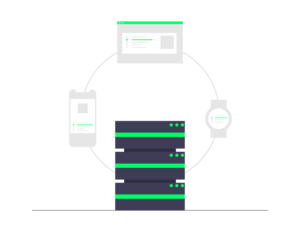About ALLEGRO ‘Agile ultra low energy secure networks’
 ALLEGRO aims at designing and validating a novel end-to-end sliceable, reliable, and secure architecture for next-generation optical networks, achieving high transmission/switching capacity
ALLEGRO aims at designing and validating a novel end-to-end sliceable, reliable, and secure architecture for next-generation optical networks, achieving high transmission/switching capacity
- with 10 Tb/s for optoelectronic devices and 1 Pbt/s for optical fiber systems
- low power consumption/cost
- with > 25% savings
- and secure infrastructures and data transfers.
The architecture relies on key enabling innovations:
- smart, coherent transceivers exploiting multi-band & multi-fiber technologies for P2P and P2MP applications, based on e.g., high-speed plasmonic modulators/photodetectors and programmable silicon photonic integrated waveguide meshes;
- loss-less, energy-efficient transparent photonic integrated optical switches, eliminating OEO conversions, e.g., with on-chip amplification in the O-band for datacom applications;
- a consistent approach to security, in terms of functional/ protocol architectures and communications, further improving QKD systems, enabling optical channel co-existence and researching on quantum-resistant (post-quantum) cryptography, developing systems based on physically unclonable functions; and
- a scalable AI/ML assisted control and orchestration system, responsible for autonomous networking, dynamic and constrained service provisioning, function placement and resource allocation, leveraging devices increasing programmability and overall network softwarization.
To achieve the target objectives and KPIs, ALLEGRO has defined a clear methodology ending in ambitious demonstrators. The consortium includes a good balance of industry and research/academia with know-how in complementary fields.
The results of ALLEGRO will be disseminated in leading conferences, events, and high-impact journals. They will have a concrete and measurable economic and social impact, contributing towards achieving key European objectives, reinforcing European leadership and digital sovereignty in the ongoing digital and green transition.
Project News
Automated Light path Deployment with LP-VE in ALLEGRO
As networks grow denser and more dynamic, automation becomes essential. In the Horizon Europe ALLEGRO project, we’ve developed the Lightpath Validation Engine (LP-VE) to enable fully automated, QoT-aware optical lightpath deployment using a Physical Layer Digital Twin...
Digital Twin as-a-Service in ALLEGRO: Enabling Smarter Optical Network Control
As part of the Horizon Europe ALLEGRO project, we’re redefining how optical networks are monitored, managed, and optimized — by integrating a Physical Layer Digital Twin (DT) as-a-Service into the network control architecture. 🔍 What is it?The DT is a real-time,...
Reconfigurable Optical Add/Drop Multiplexers (ROADMs) in ALLEGRO
In the ALLEGRO project, we’re pushing the boundaries of dynamic optical networking by advancing the modeling and understanding of disaggregated ROADMs—the core enablers of flexible, scalable, all-optical routing. 📡 What do ROADMs do?They add/drop and transparently...
Modeling Fiber Propagation in High-Capacity Optical Networks
In the ALLEGRO project, we're advancing how we understand and model fiber propagation for next-generation flexible, high-speed optical networks. 📡 The Challenge:While DSP-based receivers effectively compensate for linear impairments in fiber, nonlinear interference...
Characterizing Flexible Coherent Transceivers in ALLEGRO
In the ALLEGRO project, we focus on the deep characterization of flexible transceivers (TRXs) to enhance next-generation coherent optical networks. 🧠 How It Works:Flexible TRXs based on dual-polarization coherent technologies modulate signals using I/Q modulators...
ALLEGRO Project: Transmission Modelling for High-Fidelity Optical Performance
At the heart of ALLEGRO’s Physical Layer Digital Twin (PHY-DT) lies a robust Transmission Modelling framework—crucial for accurately predicting and optimizing the Quality of Transmission (QoT) across transparent WDM light-paths. 📡 The Challenge:Modelling light...
LLEGRO Project: Physical Layer Digital Twin for Intelligent Optical Networks
In ALLEGRO, we’re redefining how optical networks are managed and optimized through the development of a Physical Layer Digital Twin (DT)—a core component for enabling software-defined, data-driven network control. 🔬 What is a Digital Twin in Optical Networks?A...
TAPI Telemetry in Action with ALLEGRO
🔧 Driving Real-Time Network Intelligence with Open StandardsPart of the ALLEGRO Project The ALLEGRO streaming telemetry platform is taking a major step forward by integrating with the TAPI telemetry framework, enabling real-time observability and automation in optical...
Advancing Network Telemetry with Interoperable Envelope Encoding
🔍 Part of the ALLEGRO Project To support a diverse ecosystem of network elements—ranging from TAPI telemetry and transponders to EDFAs and ROADMs—the ALLEGRO project proposes a flexible, scalable, and interoperable envelope encoding strategy for telemetry data...
Seamless Integration at the Core – ALLEGRO’s Unified Monitoring & Telemetry Platform
At the heart of the ALLEGRO intelligent optical platform lies a powerful unified monitoring and telemetry system—a central enabler of smart, adaptive networking. This platform is not a standalone component. It interacts dynamically with other ALLEGRO functions, most...
